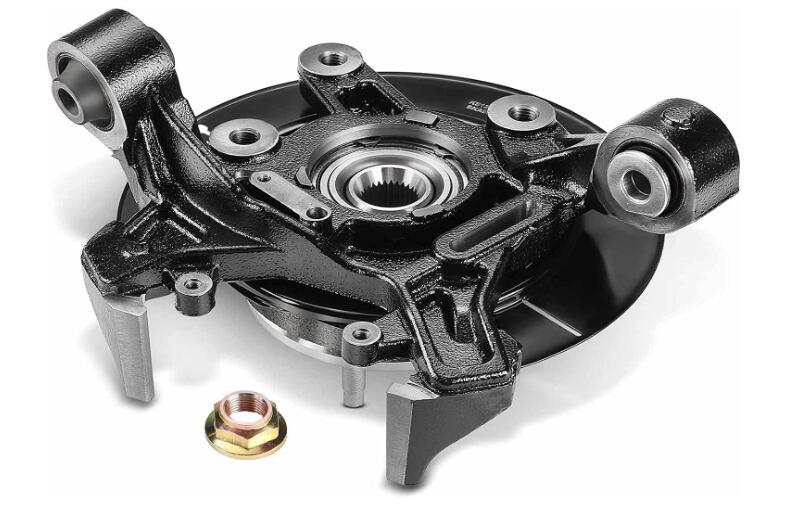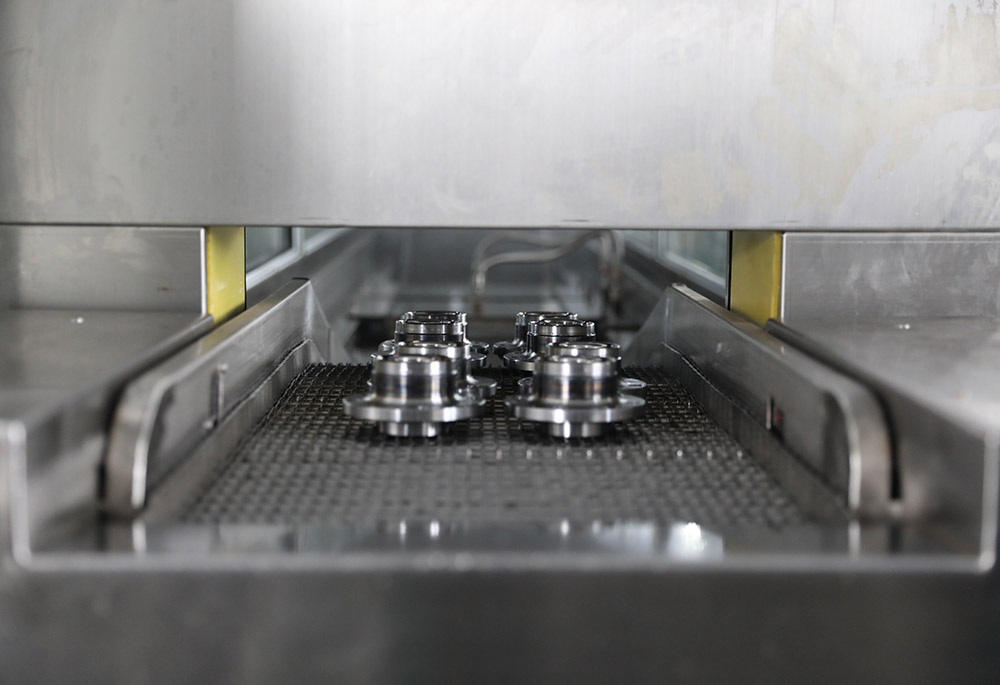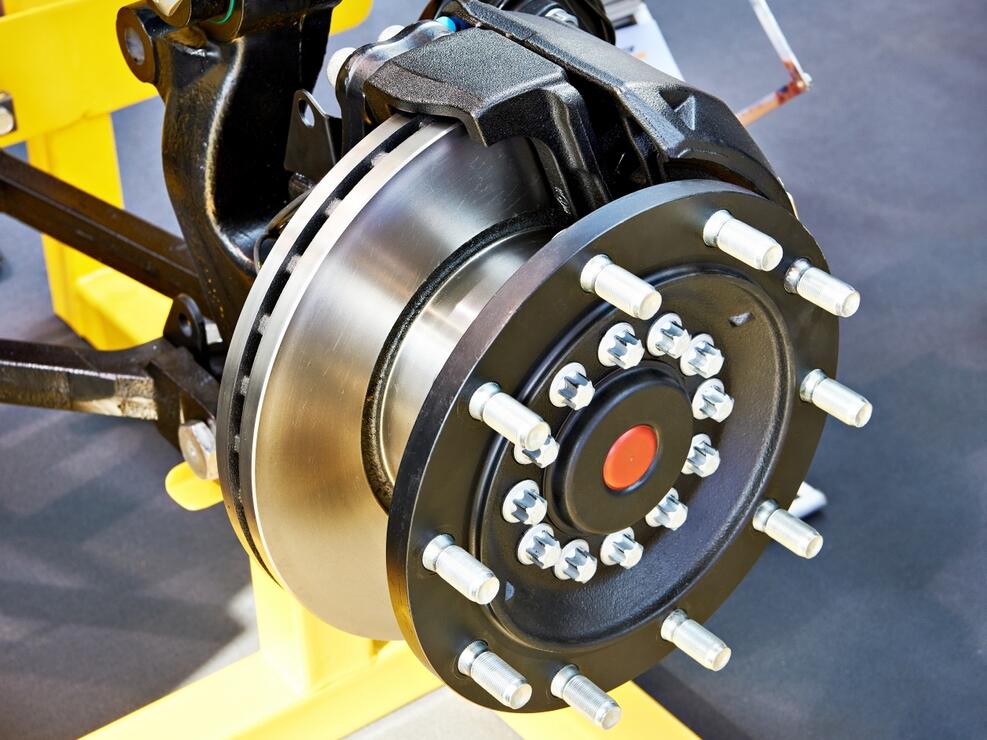Introduction:
Automotive wheel bearings are crucial components designed to ensure your vehicle’s wheels rotate with minimal friction while supporting the vehicle’s weight.
These unseen heroes of your vehicle’s mobility demand precision manufacturing and rigorous testing to withstand various driving conditions, speeds, and loads.
This article explores the key types of automotive wheel bearings, their grades, and the testing standards they must meet to ensure safe and efficient operation.
1. Types of Automotive Wheel Bearings
Wheel bearings come in different forms, each with distinct advantages and appropriate applications.
- Ball Bearings: Predominantly found in automobiles, ball bearings are incredibly versatile. They are designed to handle radial and thrust loads well and are famed for their durability. Their structure, consisting of hardened steel balls running along a smooth inner and outer race, minimizes friction and allows smooth wheel rotation.
- Roller Bearings: Roller bearings excel in handling heavy radial loads but are not designed for thrust loads. They utilize cylindrical rollers as rolling elements instead of balls, offering a greater contact area with the races. This design makes them highly effective in applications that involve high-load, low-speed operations, such as transmissions or gearboxes.
- Tapered Roller Bearings: These are engineered to handle heavy radial and significant thrust loads. They utilize conical rollers and raceways, which allow them to manage a combination of forces. You’ll often find these robust components in car and truck wheel bearings, transmissions, and gearboxes.
- Needle Roller Bearings: When space is at a premium, needle roller bearings come into play. They use small diameter cylinders as rolling elements, providing a high load capacity in a compact design. They are common in components with limited space, such as transmissions.
2. Grades of Automotive Wheel Bearings
While the ABEC (Annular Bearing Engineers’ Committee) rating system denotes the precision and tolerance of a bearing, it isn’t generally applied to automotive wheel bearings.
The ABEC system is most suitable for high-speed, precision applications such as electric motors.
In the automotive realm, the quality and performance of wheel bearings are usually determined by OE (original equipment) standards set by the vehicle manufacturer or by international standards organizations such as ISO (International Organization for Standardization) or SAE (Society of Automotive Engineers).
OE standards tend to be tailored to a vehicle’s specific requirements, considering the vehicle’s weight, intended driving conditions, and expected lifespan.
These standards can vary widely between different manufacturers or even different models from the same manufacturer.
ISO and SAE standards offer a more generalized approach, providing industry-wide benchmarks for load ratings, dimensions, and manufacturing tolerances.
3. Testing Standards for Automotive Wheel Bearings
Before a wheel bearing can be deemed fit for service, it must meet stringent testing standards.
These standards ensure the bearing can endure the stress and strain encountered during vehicle operation.
Some of these critical standards include:
- Life Testing: A life test estimates the lifespan of a bearing. It involves running the bearing at a predetermined speed and load until it fails. This test provides valuable data on the expected service life under similar conditions, helping manufacturers provide accurate maintenance schedules.
- Noise and Vibration Testing: A high-quality bearing should operate with minimal noise and vibration. Therefore, bearings are subjected to tests that measure these parameters. Excessive noise or vibration could indicate manufacturing defects or design issues, significantly affecting ride comfort and component lifespan.
- Durability Testing: Durability testing involves operating the bearing under typical conditions to verify it can withstand real-world use. It often involves long-term testing under various loads, temperatures, and speeds to ensure robustness and reliability over time.
- Environmental Testing: Wheel bearings must resist elements like dust, water, and extreme temperatures. Environmental testing ensures they can perform reliably under these conditions. This can involve dust exposure, water immersion, or operation under high and low-temperature extremes.
4. Bearing Materials and Treatments
The selection of materials and subsequent treatment procedures play a vital role in the performance and longevity of wheel bearings.
Most bearings are made from high-quality steel, chosen for their excellent strength, resistance to wear, and heat tolerance.
However, the process continues beyond material selection.
Heat treatment is a critical process in the manufacture of wheel bearings.
The steel is subjected to controlled heating and cooling procedures to alter its structure and properties.
This process can significantly increase the hardness and durability of the bearing, improving its resistance to wear and deformation under load.
Further, surface treatments, such as protective coatings, can be applied to resist corrosion and reduce friction.
This is especially important for wheel bearings as they are often exposed to harsh environments, including moisture, road salts, and temperature extremes.
5. Future Trends in Wheel Bearings
As automotive technology evolves, so too does the technology behind wheel bearings.
Alternative materials such as ceramics are being explored in the drive towards lighter, more efficient vehicles.
Ceramic bearings offer the advantages of lower friction and excellent heat resistance.
However, as of 2021, they are still relatively expensive compared to traditional steel bearings.
Integration of sensor technology into wheel bearings is another emerging trend.
Sensors can monitor conditions such as temperature, vibration, and load on the bearings.
This information can alert drivers or maintenance systems of potential problems, enabling preventative maintenance and reducing the likelihood of bearing failure.
6. The Role of Lubrication in Wheel Bearings
One crucial aspect that should be considered when discussing wheel bearings is the role of lubrication.
Lubricants minimize friction between the moving parts of the bearing, helping to reduce wear and prevent overheating.
This is typically achieved through grease or oil, each with advantages and considerations.
Grease is often the preferred choice for wheel bearings due to its stay-put nature and ability to seal out contaminants.
It typically contains a base oil for lubrication, a thickener to give it structure, and additives that can resist heat and oxidation, provide extreme pressure properties, or prevent rust and corrosion.
Conversely, oil offers superior cooling properties and less rolling resistance, making it a good choice for high-speed applications.
However, retaining the oil and preventing leakage requires a more complex system.
Choosing the proper lubricant for a wheel bearing can significantly affect its performance and lifespan.
The correct choice will depend on the bearing type, vehicle speed, operating temperature, and environmental conditions.
7. Aftermarket Bearings vs. Original Equipment Bearings
One often chooses between original equipment (OE) and aftermarket bearings when replacing wheel bearings.
This decision can significantly impact the performance and reliability of the wheel bearing assembly.
OE bearings are made to the exact specifications set by the vehicle manufacturer.
They are often the safe choice, ensuring the replacement bearing performs identically to the original.
However, they can sometimes come with a higher price tag due to the branding and the assurance of quality and fit.
On the other hand, aftermarket bearings offer a broader selection and competitive pricing.
Quality can vary, with some aftermarket manufacturers producing excellent products that match or exceed OE quality, while others may fall short.
Selecting products from reputable aftermarket manufacturers who meet or exceed OE specifications is crucial.
Conclusion: Continuing the Journey
The world of wheel bearings is vast and complex, filled with precision engineering and exacting standards.
From understanding the different types and grades, examining the rigorous testing standards, and exploring manufacturing processes, to discussing lubrication and replacement options, we have taken a comprehensive journey into this essential automotive component.
As the automotive industry advances, wheel bearings will undoubtedly continue to evolve, meeting new challenges with innovative solutions.
As we navigate this intricate landscape, understanding these integral components becomes increasingly apparent.
Regardless of where the future of mobility takes us, the wheel bearing will remain at the heart of the journey.




